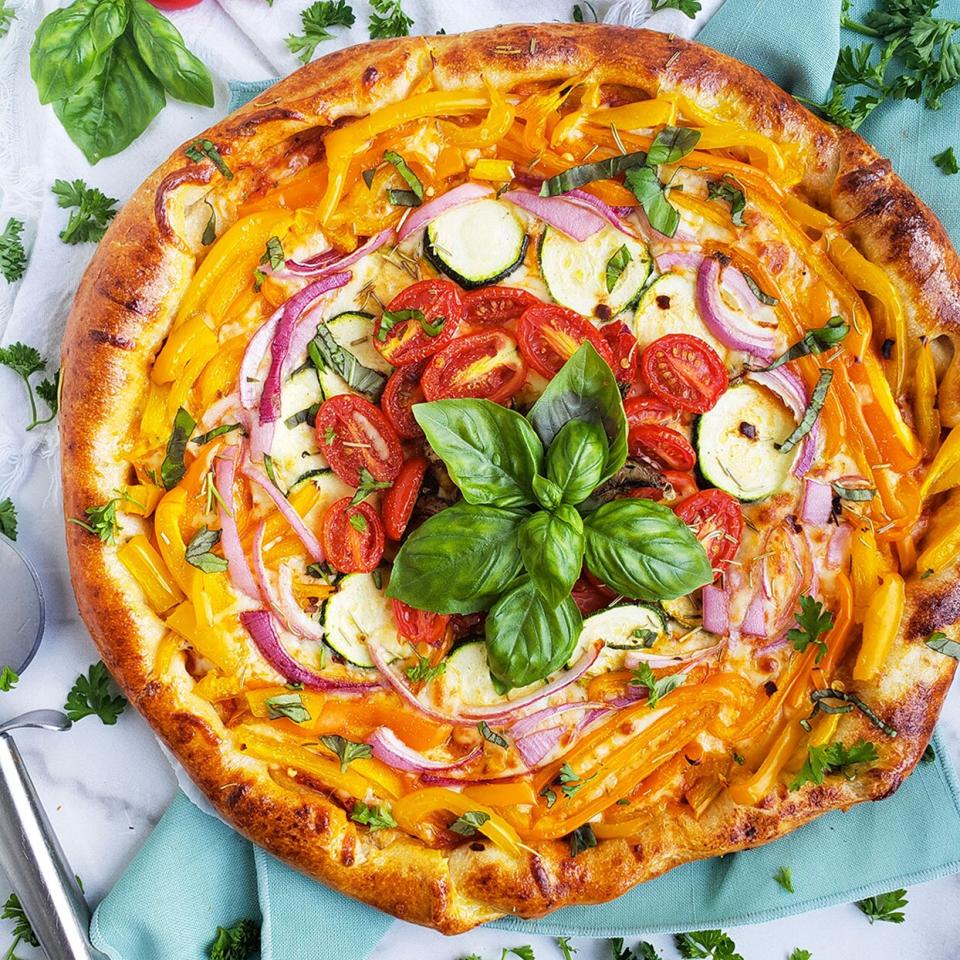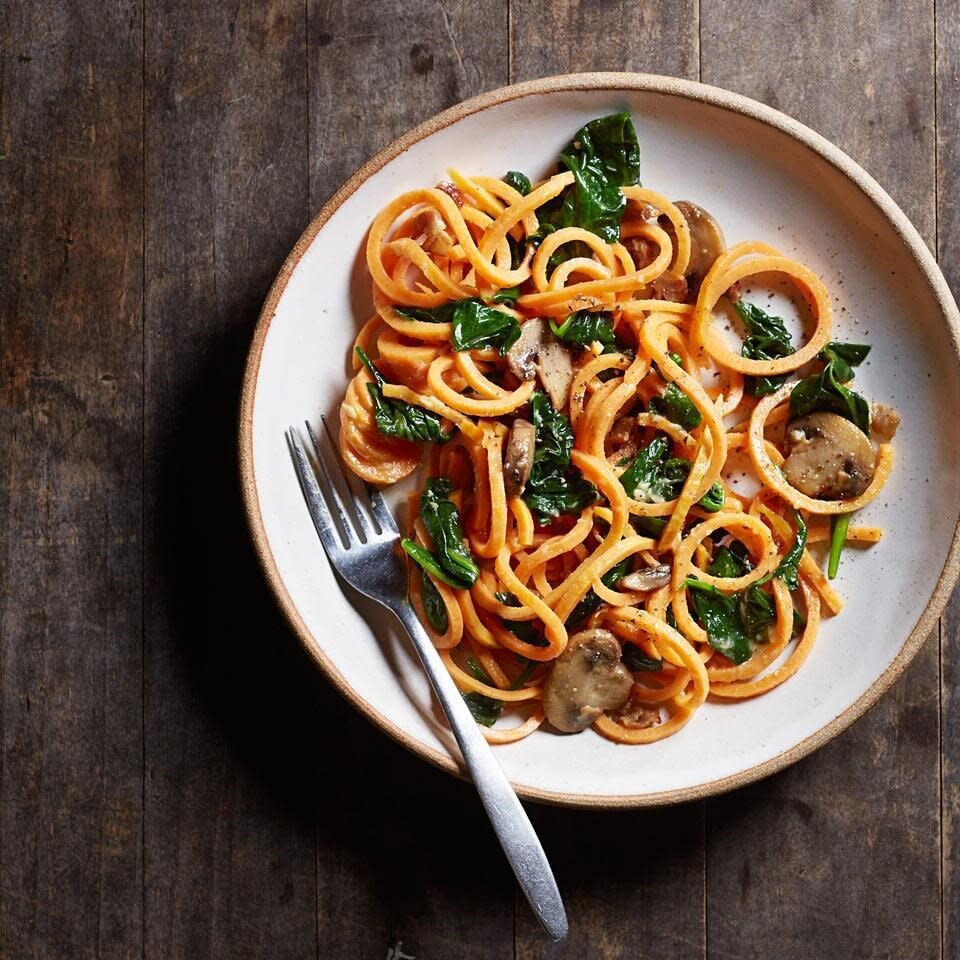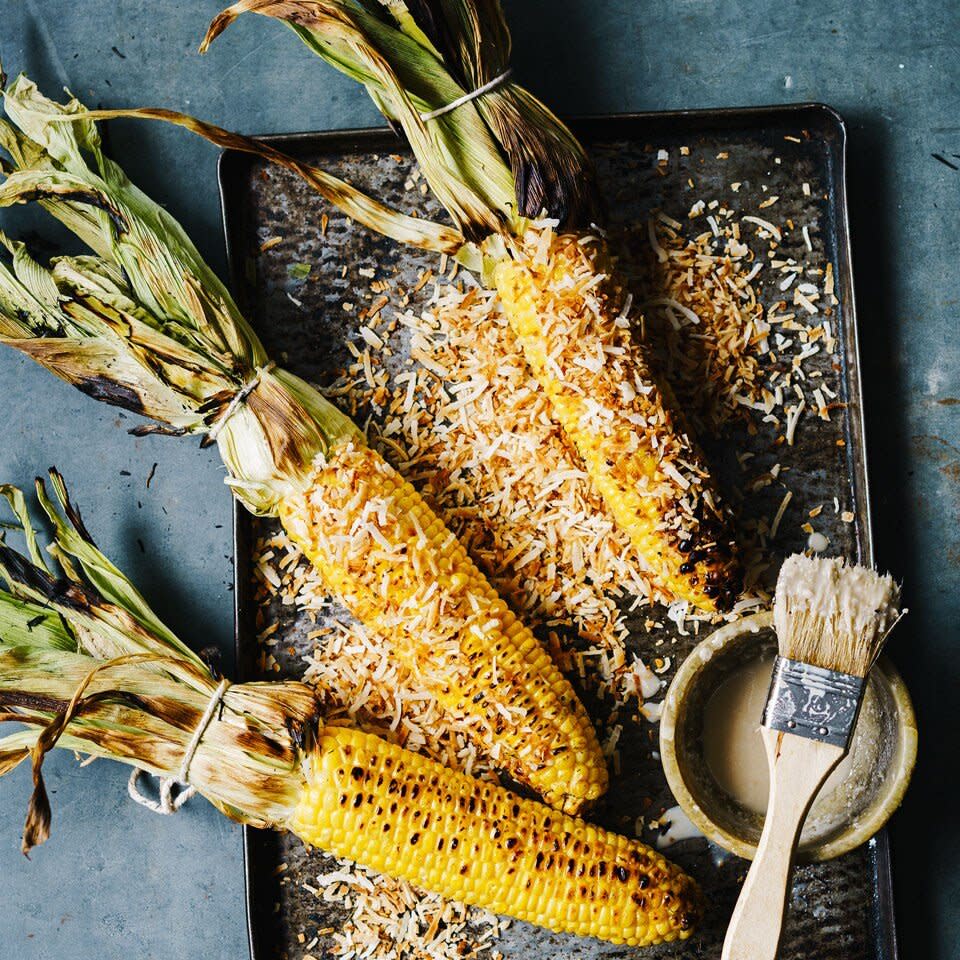Why You Should Eat the Rainbow When It Comes to Fruits and Vegetables

Most of us don't eat enough fruits and vegetables. According to the Centers for Disease Control and Prevention, 87 percent of Americans aren't getting enough servings of vegetables (76 percent don't get enough fruit each day). Eating more fruit and vegetables can help reduce your risk for chronic diseases, including high blood pressure, type 2 diabetes, heart disease, obesity and cancer. Whole fruits and veggies contain fiber, a nutrient important for keeping your gut healthy, which can reduce your risk for autoimmune diseases, fight off pathogens and infections and even improve your mood.
Related: 7 Ways to Eat More Vegetables

Andres Mathis, M.A., R.D.N., L.D.
Recipe to Try: Rainbow Veggie Pizza
Fresh produce is also packed with antioxidants and phytochemicals. What's fascinating is that nature seems to have a way of highlighting these beneficial nutrients by giving them bright colors that allow you to spot them at a glance. For example, anthocyanins make blueberries blue and may help to keep your mind sharp. Tomatoes get their ruby hue from lycopene, a phytochemical that may help to prevent prostate cancer. To get the maximum disease-fighting power that phytochemicals can provide, choose foods that represent all colors of the rainbow. The USDA suggests paying particular attention to orange and red (5 1/2 cups per week) and dark green (1 1/2 cups per week) produce, both good sources of vitamin A and other important nutrients.
Watch: See how to sneak veggies into meals
1. Red Fruits and Vegetables

Recipe to Try: Herbed Tomato Gratin
Red foods, such as tomatoes and watermelon, contain lycopene, a phytochemical that may help protect against prostate and breast cancers.
Healthy Red Fruits & Vegetables:
Guava
Pink Grapefruit
Red Peppers
Tomatoes
Watermelon
2. Orange Fruits and Vegetables

Recipe to Try: Sweet Potato Carbonara with Spinach & Mushrooms
Alpha and beta carotene make foods like carrots and sweet potatoes so brilliantly orange. The body converts these compounds into the active form of vitamin A, which helps keep your eyes, bones and immune system healthy. These phytochemicals also operate as antioxidants, sweeping up disease-promoting free radicals.
Healthy Orange Fruits & Vegetables:
Apricots
Cantaloupe
Carrots
Mango
Oranges
Papaya
Pumpkin
Sweet Potatoes
Tangerines
Winter Squash
3. Yellow Fruits and Vegetables & Leafy Greens

Many yellow and green vegetables are good sources of lutein and zeaxanthin, phytochemicals that accumulate in the eyes and help prevent age-related macular degeneration, a leading cause of blindness in older people. Leafy greens are also rich in beta carotene.
Healthy Yellow and Green Fruits & Vegetables:
Artichoke
Corn
Lettuce
Summer Squash
Wax beans
Arugula
Chard
Collards
Mustard Greens
Turnip Greens
4. Green Fruits and Vegetables (Cruciferous)

Recipe to Try: Balsamic & Parmesan Broccoli
Cruciferous vegetables, such as broccoli and kale, provide compounds called indoles and isothiocyanates, which may help prevent cancer by amping up the production of enzymes that clear toxins from the body.
Healthy Green Vegetables:
Broccoli
Brussels Sprouts
Cauliflower
Green Cabbage
Kale
5. Blue, Deep Red & Purple Fruits and Vegetables

Recipe to Try: Purple Fruit Salad
Blue, purple and deep-red fruits and vegetables are full of anthocyanins and proanthocyanins, antioxidants associated with keeping the heart healthy and the brain functioning optimally.
Healthy Blue and Purple/Deep Red Fruits & Vegetables:
Blackberries
Blueberries
Eggplant
Plums
Cranberries
Grapes
Radishes (red)
Raspberries
Strawberries
Video: How to Make Rainbow Hummus
Some original reporting by EatingWell Editors

